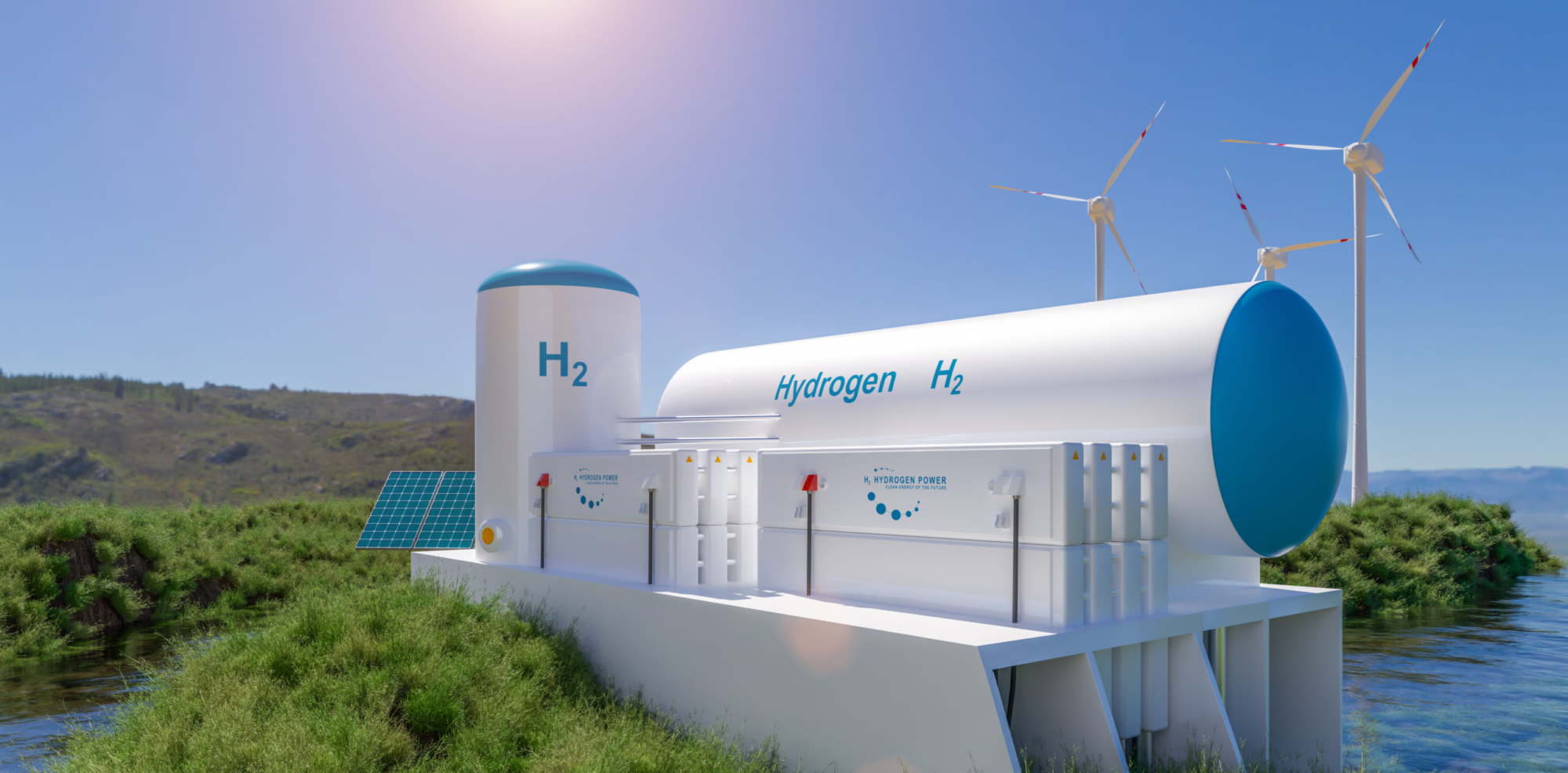
As the world grapples with the effects of climate change, the push for cleaner, sustainable energy is more urgent than ever. Among renewable energy solutions, green hydrogen is becoming a game-changer, offering huge potential to decarbonize industries. According to market research forecasts, the global green hydrogen market is expected to exceed $334.6 billion by 2032, reflecting rapid growth driven by technological advancements, government policies and the global shift to net-zero emissions.
Also read: Reducing your carbon footprint: How logistics can support green building initiatives
This article takes an in-depth look at the factors driving expansion in the field. Green hydrogen marketthe key sectors that will benefit from this growth, and the challenges that need to be addressed to unlock its full potential.
Learn about green hydrogen
Green hydrogen refers to hydrogen produced through electrolysis using renewable energy sources such as wind, solar and hydropower. The process involves splitting water into hydrogen and oxygen without producing carbon emissions, making green hydrogen a clean, sustainable energy carrier. This is in contrast to “grey” hydrogen, which is produced from fossil fuels, and “blue” hydrogen, which captures carbon emissions during the production process.
Green hydrogen serves as a zero-emission fuel source for industries including transportation, heavy manufacturing and energy storage, making it a key component of global decarbonization efforts.
Market growth and forecasts
The trajectory of the green hydrogen market is destined for explosive growth. The valuation in 2022 is approximately US$2.5 billion, and the market size is expected to exceed US$334.6 billion by 2032, with a compound annual growth rate of more than 40% during the period. Several factors contributed to this significant growth:
1. Government policies and climate goals: Governments around the world are implementing strict regulations to reduce carbon emissions and meet climate goals. The EU’s Green Deal, China’s 2060 carbon neutrality plan and the US infrastructure bill are all driving investment in renewable energy and green hydrogen.
2. Technological progress: Advances in electrolysis technology are making green hydrogen more efficient and cost-competitive. The development of solid oxide electrolysis cells (SOEC) and proton exchange membrane (PEM) electrolysis has paved the way for large-scale hydrogen production.
3. Renewable energy expansion: The increasing popularity of wind and solar energy makes it possible to produce green hydrogen on a large scale. Countries such as Germany, Japan and Australia are expanding their renewable infrastructure to support hydrogen projects.
4. Corporate commitment to net-zero emissions: Large companies, particularly in the automotive, energy and heavy industry sectors, are working towards net-zero emissions. Companies such as Shell, BP, TotalEnergies and Siemens Energy are investing heavily in green hydrogen as part of their decarbonization strategies.
Key Applications Driving Market Growth
The versatility of green hydrogen makes it an attractive solution for various industries, driving its market expansion. Some of the key areas driving demand for green hydrogen include:
1. Transportation industry
The transportation industry is one of the largest contributors to global carbon emissions, making it a key focus for the adoption of green hydrogen. Hydrogen-powered fuel cell electric vehicles (FCEV) are becoming increasingly popular due to their ability to offer longer driving range and faster refueling times compared to battery electric vehicles (BEV).
Countries such as Japan and South Korea are leading the way in developing hydrogen-powered buses, trucks and trains. Hydrogen-powered aircraft and shipping are also gaining momentum as the aviation and maritime industries look for sustainable alternatives to fossil fuels.
2. Industrial field
Heavy industries such as steel, cement and chemicals are among the most challenging sectors to decarbonize due to their high energy demands. Green hydrogen offers a viable solution for replacing coal and natural gas in industrial processes, such as iron ore reduction in steelmaking.
Leading steelmakers including ArcelorMittal and ThyssenKrupp are already exploring green hydrogen to produce mild steel. The chemical industry is also using green hydrogen to produce green ammonia for fertilizers, thereby reducing the carbon footprint of agriculture.
3. Energy storage
One of the major challenges in the renewable energy sector is the intermittency of wind and solar power. Green hydrogen offers a solution that can store excess renewable energy and convert it back into electricity when needed. This ability to serve as a long-term energy storage medium is critical to stabilizing the grid and ensuring reliable energy supply.
Green hydrogen can also be used in power-to-gas (P2G) systems to convert surplus electricity into hydrogen and inject it into the natural gas grid, further decarbonizing the energy industry.
4. Generate electricity
Green hydrogen can be used directly to generate electricity by burning it in turbines or fuel cells. Countries such as Japan are exploring hydrogen as a fuel for hydrogen-fueled gas turbines to achieve zero-emission power generation. This application is particularly important in areas where renewable energy cannot meet peak demand, providing an alternative to natural gas.
Regional Insights
The green hydrogen market is growing rapidly across multiple regions, each contributing to its global growth:
1. Europe
Europe is leading the global race for green hydrogen, driven by its ambitious climate policies and heavy investment in renewable energy. The European Green Hydrogen Strategy aims to produce 10 million tons of green hydrogen by 2030. Countries such as Germany, the Netherlands and Spain are spearheading large-scale green hydrogen projects, including Hydrogen Valley in the Netherlands.
2. Asia Pacific
The Asia-Pacific region, especially Japan, South Korea and China, is rapidly expanding its hydrogen infrastructure. Japan is a global pioneer in hydrogen energy technology and plans to create a hydrogen energy society by 2050. South Korea’s hydrogen economy roadmap aims to have 6.2 million hydrogen vehicles and 1,200 hydrogen refueling stations by 2040. China is also investing heavily in hydrogen energy, aiming to develop the world’s largest hydrogen power station. Hydrogen market.
3. North America
In North America, the United States is making significant progress in green hydrogen production. this Biden administration’s infrastructure bill Allocate billions of dollars for hydrogen research, development and deployment. California and Texas are becoming hubs for hydrogen projects, backed by large-scale solar and wind farms.
Canada is also advancing its hydrogen strategy, focusing on green hydrogen production from hydropower.
Challenges in adopting green hydrogen
Despite optimism about green hydrogen, several challenges remain:
1. High production cost: While the cost of producing green hydrogen has declined due to falling renewable energy prices, it is still higher than gray hydrogen. Continued investment in electrolysis technology and scaled production is critical to making green hydrogen cost-competitive.
2. Infrastructure construction: A global hydrogen economy requires significant investment in hydrogen production, transportation, storage and refueling infrastructure. Countries need to build robust hydrogen pipelines, storage tanks and refueling stations to support widespread adoption.
3. Water supply: Electrolysis requires large amounts of water, which may pose a challenge in areas with limited freshwater resources. Innovations in seawater electrolysis and water recycling are critical to solving this problem.
4. Policy support: While many governments are developing hydrogen-friendly policies, consistent regulatory frameworks and incentives are still needed to stimulate private sector investment and ensure long-term growth.
in conclusion
Green hydrogen will play a key role in the global transition to a sustainable low-carbon future. The market size is expected to exceed $334.6 billion by 2032, with industries such as transportation, manufacturing, energy storage and power generation increasingly turning to green hydrogen as a clean, renewable energy source.
However, to realize the full potential of green hydrogen, challenges related to cost, infrastructure and water supply need to be overcome. Governments, businesses and innovators must work together to accelerate the adoption of green hydrogen and move the world towards a net-zero emissions future. As green hydrogen technology develops and scales, it will become a cornerstone of the global energy landscape in the coming decades.
source: https://www.gminsights.com/industry-analysis/green-Hydrogen-market











Leave a Reply Cancel reply
You must be logged in to post a comment.